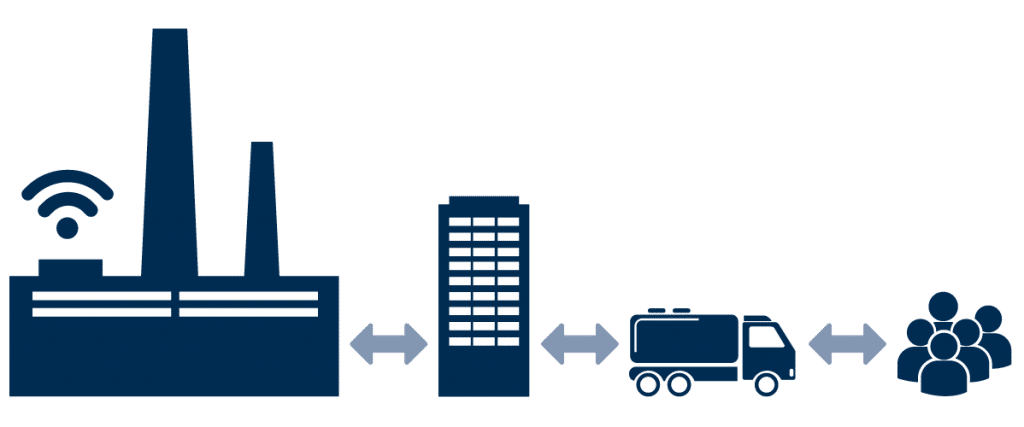Five facts about Industry 4.0
“This story was originally published by OPC Router
and has been republished here with permission.”

Industry 4.0 has become like a trademark term for state-of-the-art data and information communications in the technical and industrial realm. Likewise, it has also evolved into a scientific field with a wide array of specialist terms, methods and models that often serve to confuse more than enlighten. What’s needed is a roadmap for targeted action. This article does just that. It removes uncertainties and obscurities and offers easy action-based orientation.
1. Industry 4.0 has been around for a long time
ndustry 4.0 has been around ever since industries seriously got into digitalization by connecting diverse systems in networks. Essentially, industry 4.0 is about best-possible digital connectability and interoperability for better control of production and business processes. However, the respective crosslinking degree as well as the technical opportunities this entails are by comparison much greater today than they were in the 70s and 80s, or at the turn of the millennium. Any digitally networked system can be regarded as industry 4.0-ready – even if the term was only coined in 2011 by the German Federal Government (BRD) and has now become the main defining term for technological industrial innovation worldwide.
2. Industry 4.0 is not clearly defined
Industry 4.0 has become a collective term for digital industrialization measured by today’s technical advancement. This is marked by innovative technological capacity in digital applications and systems such as cloud computing, ERP and SAP systems, networked manufacturing, and software-controlled applications, which digitally cross-link and thus enhance primary requirements planning, scheduled material provision, lot size planning as well as scheduling and capacity planning. Industry 4.0 essentially means applying digitally integrated, model-based engineering to any company desiring to undergo Industry 4.0 transformation. De facto, unequal systems are linked together to provide disruption-free and high-performant network capacities in the context of well-built network architectures. Once this is established, data no longer has to be transferred manually, by copying data off machine displays on sheets of paper, for instance. Instead, data can be directly read from the machine and printed in the form of data excel sheets, or -more preferably – data can be transferred via an OPC UA-ready interface to the respective ERP system, for further use in various business units. Thus, providing selective point-by-point industry 4.0 capability – commonly referred to as “phased industry 4.0 implementation” – by utilizing networked data management in the best possible way. This being the backbone of industry 4.0. However, If you endeavor to connect an ERP system to an MES (machine execution system) while also connecting all peripheral devices, you are essentially implementing a comprehensive full-scale Industry 4.0 concept.
3. Industry 4.0 implementation is not complicated
Scientific articles about industry 4.0 often inherently suggest that a huge amount of time and effort need to go into gaining enough insight and engaging in lengthy consultation processes before you can make industry 4.0 happen in your company. From a pragmatic point of view, that doesn’t have to be the case.
Identifying media gaps is an easy task in any company. Each media disruption offers the respective blueprint for further optimization tasks in an industrial enterprise. The effort it takes to implement industry 4.0 in your own company depends on its size and complexity. Possibly, smaller projects can be implemented within 3 to 10 days while bigger projects – that include networked solutions for a big enterprise with all its business units and diverse production plants – may require a 3-month project or a two-year project plan. It depends on a company’s preconditions. While the project progresses, smaller subprojects come into focus that are implemented in a point-by-point fashion until all business units and production plants are connected. This phased industry 4.0 implementation approach allows fast but successively carried out industry 4.0 connectivity, which does not interfere or impede with your company’s day-to-day operations. Thus making transition smooth. In case the OPC Router is selected to serve as OPC UA data hub, machines and systems can be connected according to a predefined priority list to ensure fast connectivity for business areas of uppermost importance.
4. industry 4.0 means competitive advantages
The competitive edge better Industry 4.0-connectivity provides is due to a number of important advantages:
- Time-to-market intervals get shorter
- Products can be produced and dispatched faster
- Products are less often blemished or faulty
- Products are better documented
- Your customer service improves because of faster and more complete information flows
- Your quality control can engage in holistic quality management encompassing products, systems and processes
5. Industry 4.0 saves money
Industry 4.0 implementation increases efficiency of production and business processes, now that seamless tracking and real-time documentation systems are in place – right from a customer’s initial inquiry or placement order to product dispatch. Moreover, your customer support can better provide quality support because dead ends in communication flows do not exist anymore. Far fewer defective products are produced, and intervals for time-to-market of new products, order handling and dispatch are altogether much shorter.
Phased industry 4.0 implementation adds value along the way: With each selective implementation, return on investment (ROI) increases and operating costs decrease respectively, while the newly-connected business areas are more easily and more effectively managed. Better control of business processes make your business processes transparent. By introducing focused self-optimization processes, reliable order tracking and production progress tracking can be further improved – for an even higher ROI. A pleasant side effect of systems-wide connectivity: Seamless 24/7 documentation of production data relevant to quality control also positively influences production planning.
Additional related information
Product information and freely available download link to run an OPC Router test: OPC Router >>




